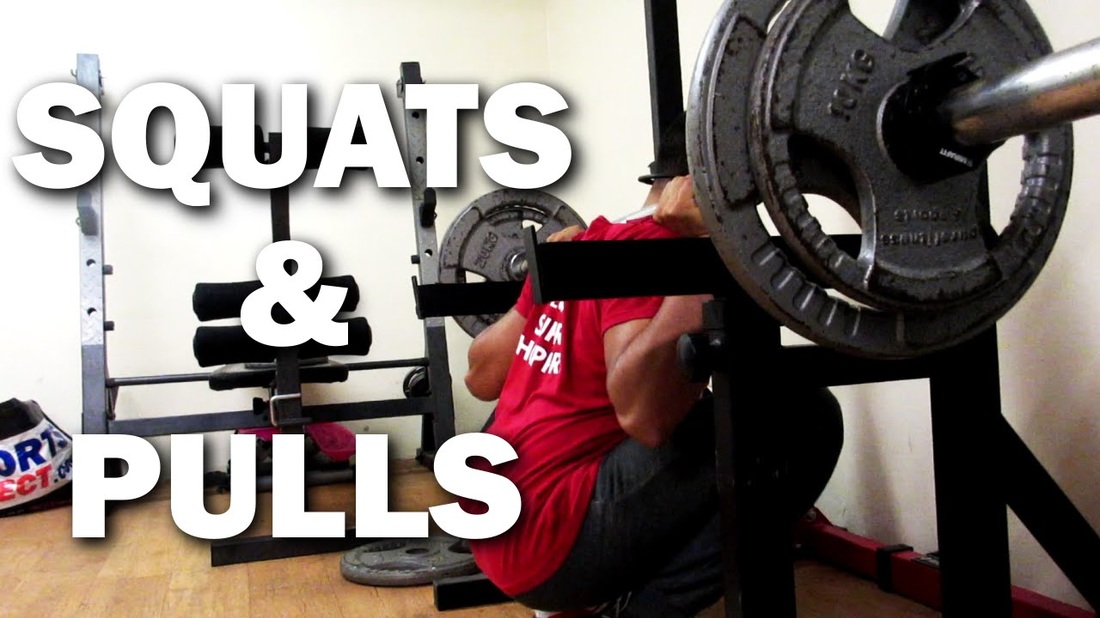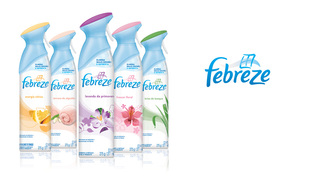|
Fun day at the crowded gym, doing planks with medicine ball, to create some instability. My abs are still hurting from yesterday's ab rollers. Ab roller exercises are really painful, and take a while to recover from.
Here's how we do it: 1. Execute a core exercise movement for 60 sec, 30 days. 2. Video, post online, hashtag #30days60secCoreChallenge and#livethechange 3. Tag 5 friends to get them into action too. 4. Explain why we do it. (transform ourselves and one person at a time). °
0 Comments
A late night Ab Roller challenge coupled with the Core Challenge. With special appearances by both kitties. My abs were hurting but I guess it's sixty seconds of mind over matter.
Don't Mind, No Matter! Here's how we do it: 1. Execute a core exercise movement for 60 sec, 30 days. 2. Video, post online, hashtag #30days60secCoreChallenge and#livethechange 3. Tag 5 friends to get them into action too. 4. Explain why we do it. (transform ourselves and one person at a time). ° As part of the #30Days60SecCoreChallenge, we have seen friends attempting a one-minute-a-day core training. While this is a great start, what is the purpose of strengthening our core, besides chasing for that lean waist and possibly, washboard abs? What is the Core?Our core is a complex series of muscles, extending beyond our abs, and includes everything besides our arms and legs. It is incorporated in almost every part of the human body. The core muscles include the pelvic floor musclse, transversus abdominis, multifidus, internal and external obliques, rectus abdominis, erector spinae, and the diaphragm. Minor core muscles include the latissimus dorsi, gluteus maximus, and trapezius. The Two Core MythsMyth #1: You can build your core by doing squats, deadlifts, overhead presses. etc. You might have heard from friends and even personal trainers that all you need to do is to include multi-joint movements such as squats, deadlifts, etc into your workout, and that would be enough to train your core. It is not necessarily true. Previously, when I went to the gym, I was not doing any squats or deadlifts, because every bilateral lift caused me lower back pain. Why did this happen? Instead of each portion of my core taking its fair share of the stress, my lower back was taking an unnecessary and inordinate amount of the load (and stress). This is equivalent to my abs and lateral stabilisers working at 50% (or more) capacity, which forced my lower back to take on not only its own fair share of workload, but also the load for the other muscles as well. This exacerbated my back pain, and ironically caused me to lay off the important compound exercises. This is a good illustration of what complimentary core work is essential. If our core is balanced front-to-back and side-to-side, we will be able to divert the load from the lower back to the core muscles. Myth #2: Sit-ups or Crunches are perfectly fine exercises Crunches are what most of us do at the gym or even in the comfort of our own home. However, there are numerous studies that point to the issues with crunches. A crunch trains the rectus abdominus by pulling the rib cage down. When this happens, we increase thoracic kyphosis. When we increase the kyphosis, we loses the T-spine extension. This repeatedly puts our scapulae in a poor and awkward position. ConclusionHence, the next time you attempt any core exercises or the #30Days60SecCoreChallenge, remember not to do anything that might injure your spine. If you would like to do sit ups or crunches, try to do it on a Swiss Ball. Alternatively, you could also try Seated Leg Tucks. If this is too easy,
American football coach, Tony Dungy changed the game with an interesting yet counter-intuitive coaching approach. Instead of trying to outmatch his competition with complex schemes and tougher players, Tony drilled his team to only a few key plays. He did everything that he could to get his team to stop thinking, and react based on habit instead. Tony understood that habits cannot usually be overcome. Instead, a habit can only be changed if a new routine is successfully inserted into the process with exactly the same cue and the same reward. He then trained his team to automatically link the cues that they already knew to different routines that were on-field. This consisted of routines that were less complex, required fewer choices in decision-making, and more subconscious reactions. With this approach, Tony turn two abysmal teams into championship contenders. Alcoholic AnonymousPerhaps, one of the most famous example of successful habit change is the 12-step program of Alcoholics Anonymous. The author (of this book) was fascinated with how a physical addiction with psychological and genetic roots is frequently overcome by an unscientific, unstructured and largely arbitrary system that addresses neither the psychiatric nor biochemical factors that experts say are the foundation of alcoholism.
Alcoholics Anonymous inserts a new routine into the cue/reward system by identifying what need the alcohol is fulfilling (e.g. escapism, relaxation, companionship, etc.) and hence provides a similar type of relief through the AA group. Nevertheless, this is insufficient to keep alcoholics from refraining from drinking beer or wine when the stresses of life takes its toll. There is one other crucial element: belief. Belief is a skill that makes habit change possible. Change occurs among other people. It seems real when we can see it in other people's eyes. This sunny afternoon, after the Wellaholic product shoots, we decided to have some fun doing our Core Challenge at the East Coast Park as well.
The rough surface of the table caused a slight injury to both my elbows, but oh well, it will heal anyway. Without knowing, I am already halfway through the challenge. It's heartening to know that I am keeping to it consistently, and that this has started to inspire more people to allocate 1 minute a day doing this. Live the Change! Here's how we do it: 1. Execute a core exercise movement for 60 sec, 30 days. 2. Video, post online, hashtag #30days60secCoreChallenge and#livethechange 3. Tag 5 friends to get them into action too. 4. Explain why we do it. (transform ourselves and one person at a time). ° Day 15 of the #30days60secCoreChallenge °
Starring Princess Yuki this evening!! ° Here's how we do it: 1. Execute a core exercise movement for 60 sec, 30 days. 2. Video, post online, hashtag #30days60secCoreChallenge and #livethechange 3. Tag 5 friends to get them into action too. 4. Explain why we do it. (transform ourselves and one person at a time). ° Day 14 of the #30days60secCoreChallenge + Day 7 of the #wellaholicabroller challenge! °
It's just 60 seconds. No excuses to myself! ° Here's how we do it: 1. Execute a core exercise movement for 60 sec, 30 days. 2. Video, post online, hashtag #30days60secCoreChallenge and #livethechange 3. Tag 5 friends to get them into action too. 4. Explain why we do it. (transform ourselves and one person at a time). °  You might be astounded to know that long long time ago in America, in the early twenties, hardly anyone brushed their teeth. In fact, rotting teeth was such a serious problem for the soldiers in World War One that government officials declared poor dental hygiene as a national security risk! That all changed, however, when a marketing maestro by the name of Claude Hopkins. Claude was actually the genius that took unknown brands such as Goodyear and Quaker Oats, and turned them into household brand names. What did Claude do? His signature tactic was to tap into the habit loop by anchoring the product to a specific trigger, regardless of how incredulous the connection was. Quaker Qats, for example, became successful when Claude was able to convince America that it provided 24-hour energy – but only if you ate a bowl every morning. Similarly, Claude applied the same principles to toothpaste. He ran advertisements that read, “Just run your tongue across your teeth. You will feel a film – that’s what makes your teeth ‘’off colour” and invites decay.” After giving people the cue, he continued with images of beautiful white smiles and the statement: “Note how many pretty teeth are seen everywhere. Millions are using a new method of teeth cleaning. Why should any woman have dingy film on her teeth? Pepsodent removes the film!” The claim was in fact downright false and unwarranted. The “film” is a naturally occurring membrane, and toothpaste actually doesn’t do anything to remove it. However, the cue was universal and easily apparent, and people could relate to the connection to the reward (beautiful teeth). Within a decade, toothpaste usage had grown from 7% of the population to 65%, and probably 99.9% in the modern day. Back to Febreze In the earlier posting, I mentioned about Febreze. Febreze was actually a technological marvel that worked well. The problem was the phenomenon of the human olfactory system that causes people to become used to any smell and lose the ability to detect it. In this manner, a lady with nine cats and a house odour had no cue sufficient to induce or convince her to use the product that would probably transform her life. P&G executive were about to axe the product when the product team discovered what scientists already knew; that a habit is only formed when the brain begins to anticipate and crave the reward the moment the cue is introduced, before the routine is even completed. You can’t sell a product that provides scentlessness because there is no cue available for the brain to anticipate. Febreze sales went through the roof once P&G began marketing the product instead as an air freshener – a product to be used as the final step of a cleaning process or routine to make the room aromatically fresh and inviting. Once people tried the product, they began to crave the clean smell from Febreze. Creating a Cue  It was here that the authors of the book reveal that Claude Hopkins’ methods really had little impact on the sales of Pepsodent toothpaste. In reality, that particular toothpaste’s success was completed by chance. Pepsodent had included citric acid, mint oil, and other ingredients that created that now-familiar cool, tingling effect. That feeling created a cue – people missed the feeling when they forgot to brush their teeth. The tingling serves no purpose other than to let people know the product is working. Having a fun plank night while brushing Tigger!
He had to move around to make it even harder for me to maintain stability while brushing him. Tigger has been getting more needy lately, but I am not complaining. (He's napping right beside me now as I type this). Here's how we do it: 1. Execute a core exercise movement for 60 sec, 30 days. 2. Video, post online, hashtag #30days60secCoreChallenge and #livethechange 3. Tag 5 friends to get them into action too. 4. Explain why we do it. (transform ourselves and one person at a time). ° Prevent “oops I forgot” and other excuses, and make your habits last indefinitely. Scenario #1: The marketing team at Procter and Gamble investigates videos of people making their beds. They attempt to figure out how to sell a new product called Febreze, which was on track to be the greatest flops in their company history. Suddenly, one of the team members detects a nearly imperceptible pattern. With a slight shift in marketing, Febreze goes on to earn a billion dollars a year. Scenario #2: A young lady made a remarkable transformation. Over the past two years, she has transformed her life is almost every aspect. She has quit smoking, took part and completed a marathon. She has also been promoted at work. Neurologists investigated and realised that the patterns inside her brain has fundamentally changed. What do these two scenarios have in common? Success was achieved by focusing on the patterns that shape and affect every aspect of our lives. HABIT helped the transformation. The Power of HABIT Written by Pulitzer prize-winning reporter and writer, Charles Huhigg, the 2012 New York Times bestseller The Power of Habit describes several examples of the roles of habits in individuals, organisation, as well as societies, and follows up with methods to recognise and consciously direct the things that really control our behaviour and our results. I will dedicate several blog posts to uncover the chapters one by one, with a key purpose in mind. On why it is important to form HABITS that will guide us and lead us to live a fulfilling life, or what I term as a #wellaholic life. CHAPTER ONE: How Habits Work The first story touched on Eugene Pauly, a 71-year-old man who lost part of the lobe of his brain (medial temporal lobe) due to a viral infection. The rest of Eugene's brain was perfectly intact, and he had no problem recounting or recalling anything that happened before 1960. However, he suffered a total short-term memory loss, and was unable to retain any knowledge of any new event or events for more than a minute. He constantly repeated his words and actions from a minute ago. Eugene could not recognise his family nor his friends, and he couldn't also tell where his bedroom was located, or how to get to the nearby supermarket. However, in an effort to ensure that Eugene got some exercise to keep him healthy, his wife started to take him to walks around the block on a daily basis. One day, Eugene disappeared, and his wife went into panic mode, only to realise that Eugene showed up fifteen minutes later. While Eugene was unable to draw a map of his block or even point to where his house was, he was able to take that same walk around the block every day. Eugene has demonstrated what scientists had suspected but never before proved; that habits are formed and operate entirely separately from the part of the brain responsible for memory. Later tests revealed that we learn and make unconscious choices without having to remember anything about the lesson or about decision-making. Your brain is constantly seeking new ways to save effort. As a result, it is always "rearranging" sequences of actions into automatic routines. Backing out of the driveway, for example requires over a dozen actions, but many of us do it daily without a second thought. The HABIT LoopThe habit process consists of a three-step loop:
HABITICAAs part of the #wellaholic movement, I am currently exploring how to leverage the power of Gamification and Group Responsibility to form habits that stick. That has led me to HABITICA, a free habit building and productivity app that treats our real life like a game. With in-game rewards and punishment to motivate you and make you stick to your dailies and to-do tasks. While I am "beta-testing" this application for #wellaholic, I would like to invite anyone who would like to make a conscious attempt to form a habit (such as sticking to the #30days60secCoreChallenge and #WellaholicAbRoller challenge) to join us. Go to HABITICA, create a free account and contact me - I would gladly add you to our party, and let's create good habits and slay the monsters!
|
AuthorI am MrWildy and I am trying to journal more about my life and also my travels. Find out more about me here. Categories
All
Archives
July 2022
|





 RSS Feed
RSS Feed